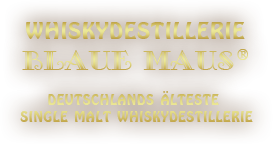New world whiskies -„From Eau-de-Vie to Uisge Beatha“
(„Whisky Magazine – Norwich, Norfork Great Britain“, May/June 2002)
… Perhaps not surprisingly, the cradle of this new family of whiskies stands in the heartland of fruit schnapps production: Germanspeaking central Europe. One of the very first people – in the early 1980s – to start producing whisky in a schnapps still was Robert Fleischmann (www.fleischmann-whisky.de). The Blaue Maus Distillery in the village of Eggolsheim in Frankonia, southern Germany, is part of his nautically-themed tavern and this is reflected in the names of some of his single malts. Besides Blaue Maus, the distillery presendtly produces Shwarzer Pirat, Krottentaler and Spinnaker. All Fleischmann´s whiskies are distilled twice form non-peated malt and matured for abaout eight years. Behind the different whiskies, Robert tells me mysteriously, ar „different types of malt and differend casks“. …
Alex Kraaijeveld
Deutsche Übersetzung
„Vom Schnapsglas zum ´Wasser des Lebens´“
… Es überrascht nicht, dass die Wiege einer neuen Familie von Whiskys im Herzland der Obstbrand-Produktion steht – im deutschsprechend Zentraleuropa.
Einer der allerersten, der in den frühen 80er Jahren mit der Whisky-Produktion begann, war Robert Fleischmann (www.fleischmann-whisky.de).
Die Destillerie „Blaue Maus“ im fränkische Eggolsheim (Süddeutschland) ist ein Teil seines maritimen Lokals und das spiegelt sich auch in den Namen seiner Single Malts wieder. Neben dem Whisky „Blaue Maus“ produziert die Destillerie den „Schwarzen Pirat“, den „Krottentaler“ und den „Spinnaker“. Alle Fleischmann Whiskys bestehen aus „non-peated“ (nicht im Torffeuer geräuchtertem) Malz, werden zweimal destilliert und reifen ca. 8 Jahre. Hinter dem Geheimnis der verschiedenen Whiskys, teilt mir Robert hinter vorgehaltener Hand mit, stecken verschiedene Malzsorten und die verschiedenen Fässer.
Alex Kraaijeveld



